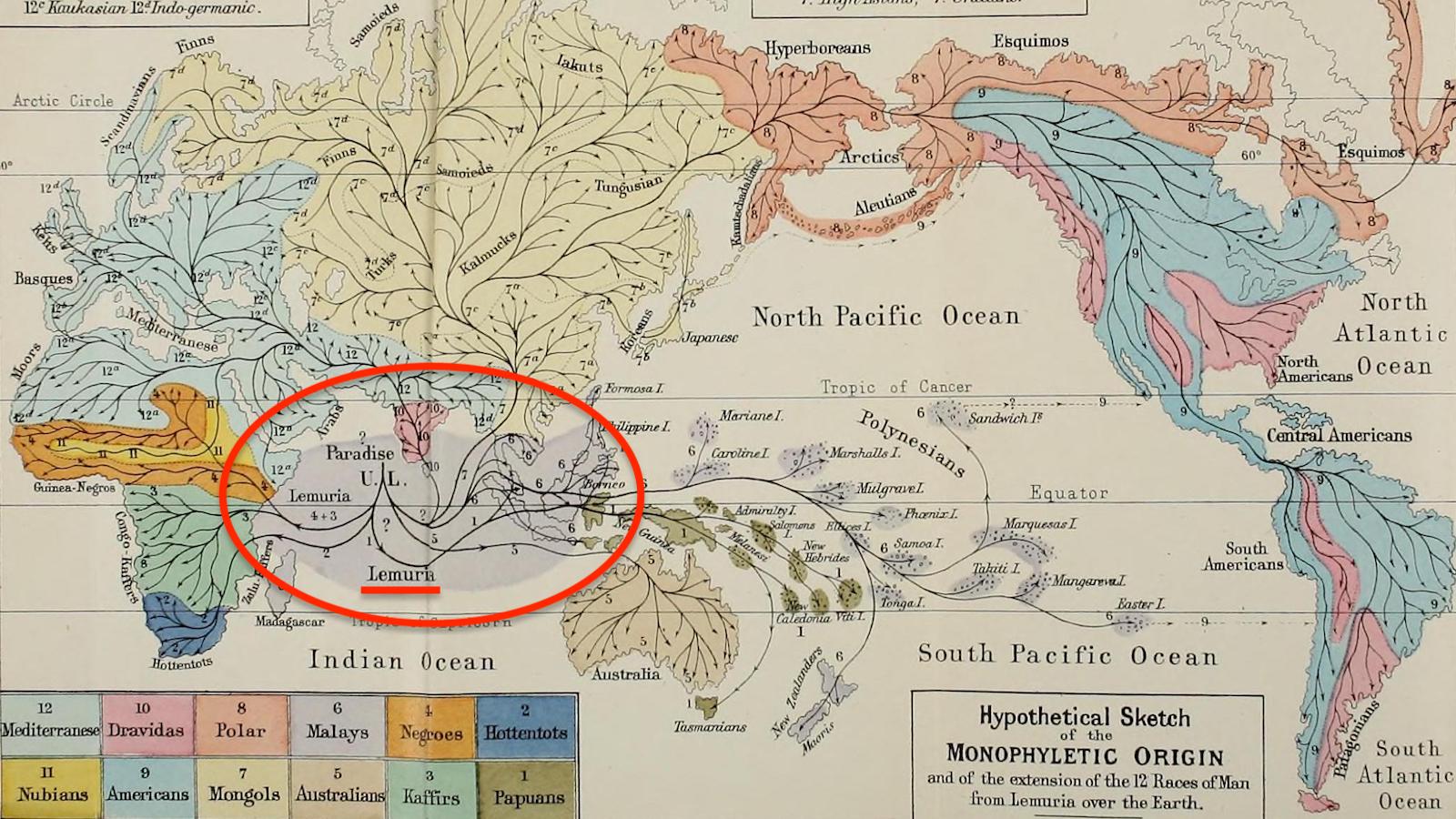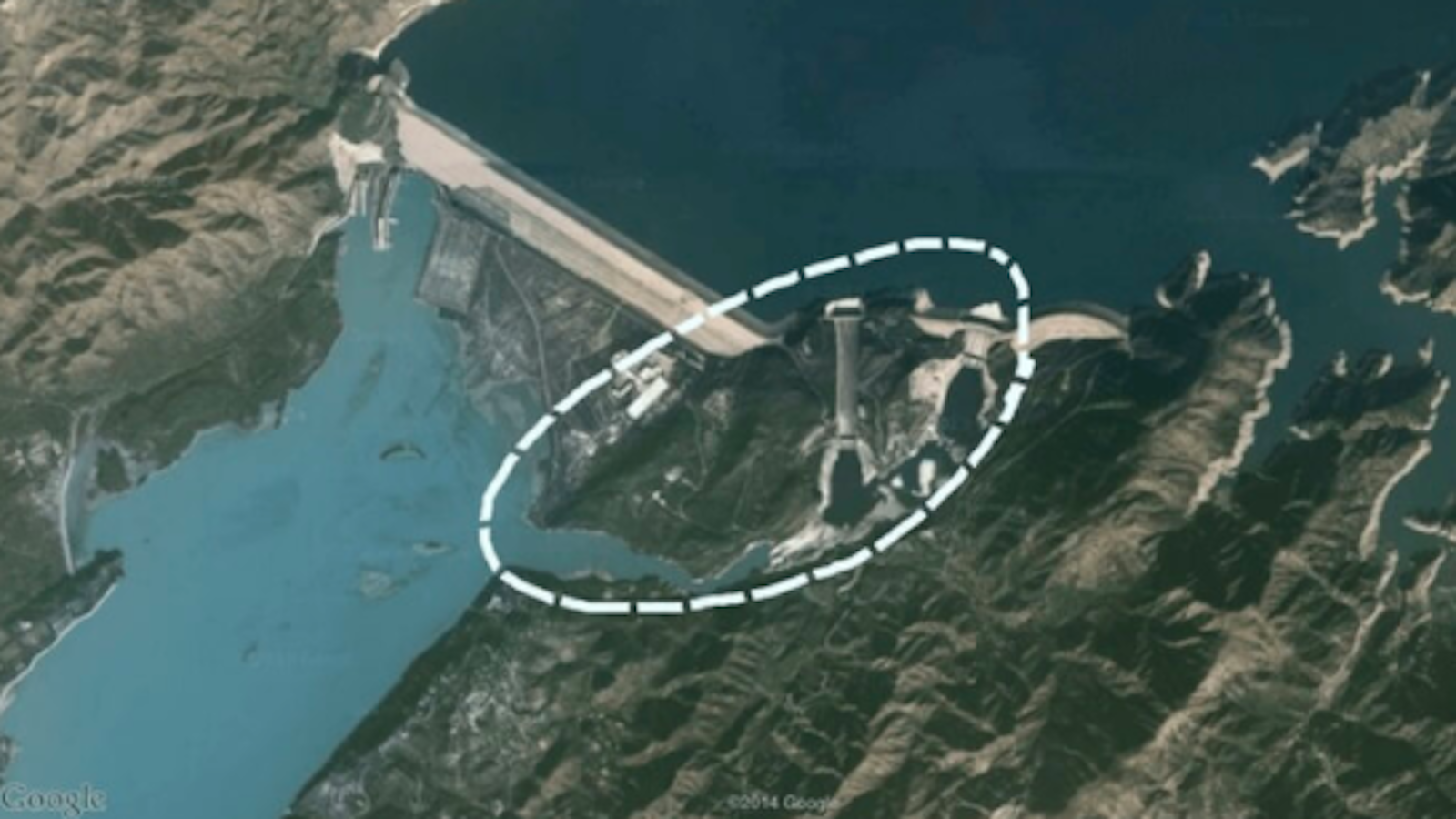Why Wyoming doesn’t exist, but Bielefeld does (again)
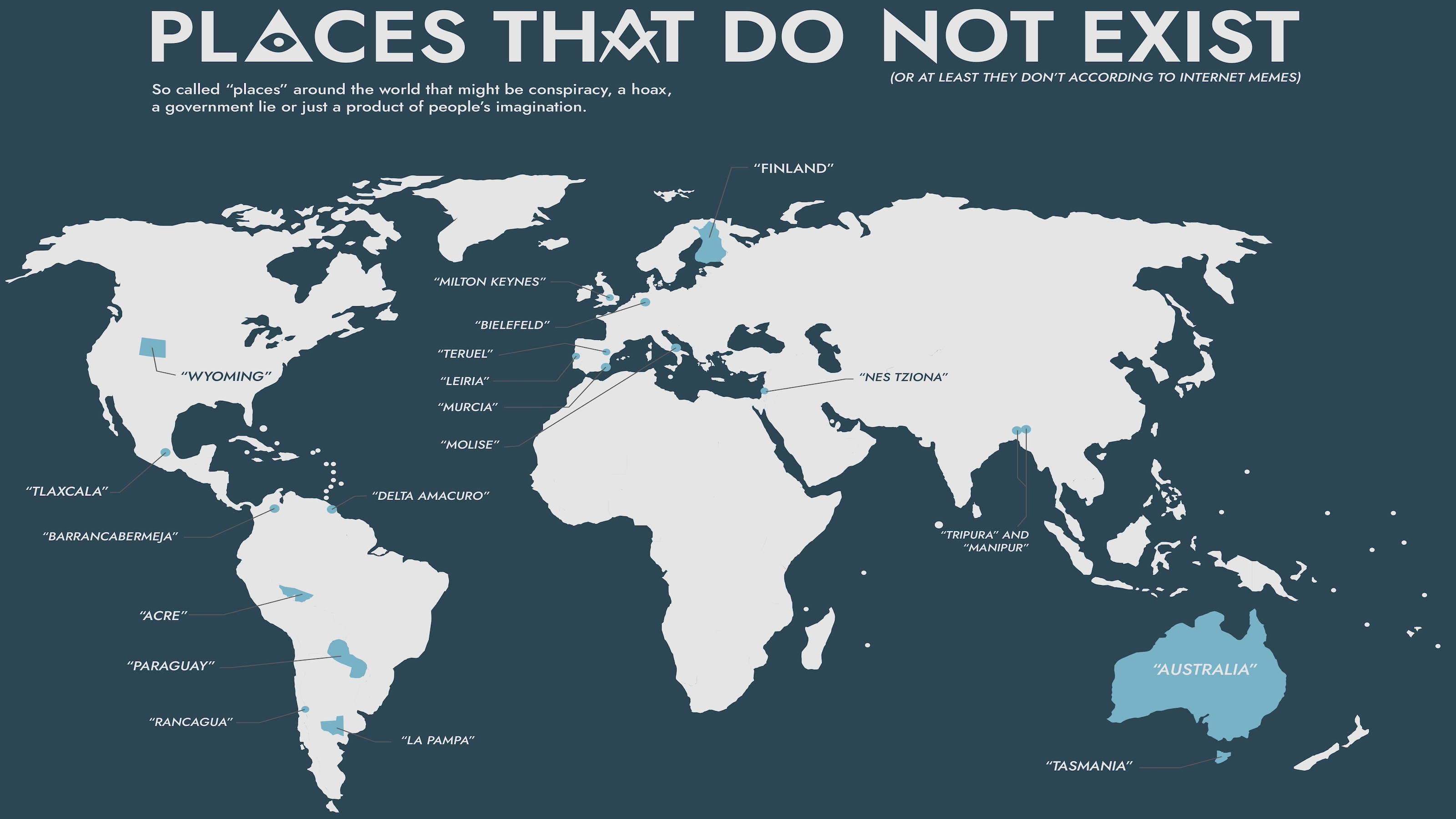
- Some cities, states, or even countries seem so small, far away, and unimportant that it’s tempting to pretend they don’t exist.
- The U.S. state of Wyoming and the German city of Bielefeld are prime examples, each the subject of elaborate but playful conspiracies.
- Uniquely, the Wyoming conspiracy has a fairly specific starting point: a Garfield episode from 1989.
Wyoming is right there on the map. It sends two senators to DC. And although it is alphabetically last on the list, you cannot reach the canonical complement of 50 U.S. states without it. Beyond that, however, what evidence do we really have that Wyoming even exists? Have you ever been there? Have you ever met a real live Wyomingite?
Wyoming is a distortion of spacetime
We didn’t think so. And we’ll tell you why: Wyoming isn’t real. According Urban Dictionary — admittedly not the acme of factual accuracy — Wyoming is “a distortion of spacetime that only appears to exist. Anyone you’ve met who thinks they have been to Wyoming, or believes they have lived in Wyoming, have had fake memories implanted by the U.S. government.”
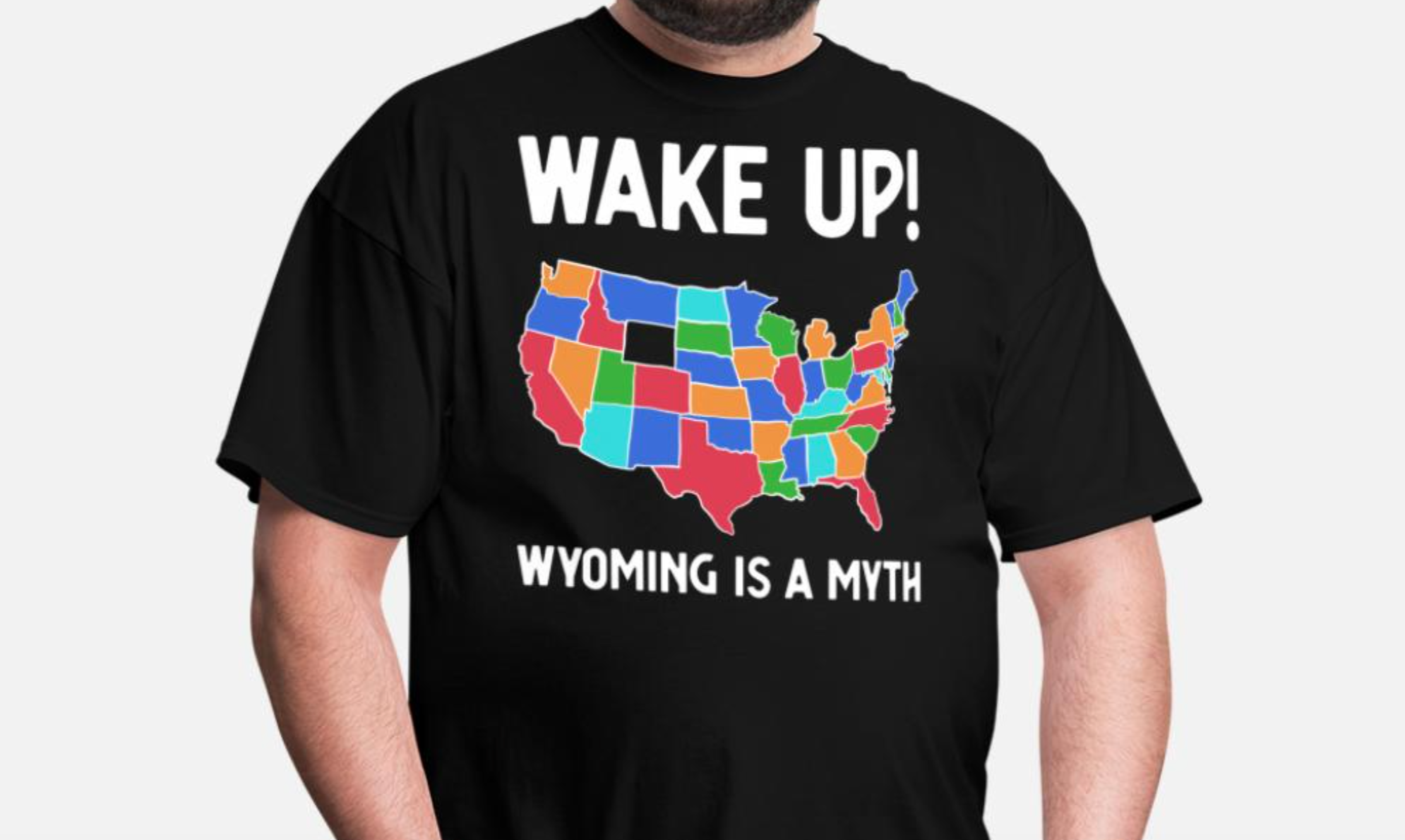
The feds would rather have us believe in Wyoming than know about that spatio-temporal shambles, because “it would cause a mass panic if the public knew the truth.” And don’t go poking your nose where it doesn’t belong: “If you attempt to drive into Wyoming, you will wake up in Canada, naked, and with no memories. (This is how Canada gets new citizens.)”
As this map shows, Wyoming isn’t the only “real” place the existence of which is denied by facetious conspiracy theories. Worldwide, that ignominy is shared by places as far apart as the Mexican state of Tlaxcala, the Indian states of Tripura and Manipur, the cities of Bielefeld in Germany and Milton Keynes in England, and the entire countries of Paraguay, Finland, and Australia.
Easily mocked as insignificant by the (self-)important
That list provides an inkling of what’s going on here. These places are either small, poor, sparsely populated, out of the way, hard to reach, or any combination of the above. In other words, they are easily mocked as insignificant by those smugly ensconced in centers of (presumed) wealth, (supposed) excellence, and (self-)importance. To deny their existence is to take that mockery one final step further.
Such sarcastic derision is facilitated and reinforced by the internet: There is a subreddit called Wyoming Doesn’t Exist and one called Wyoming Isn’t Real. Not that they are a match for each other. The former has 34,000 members and lots of recent activity, while the latter barely reaches 1,200 members and its most recent post is two years old. You could argue, therefore, that Wyoming Isn’t Real doesn’t exist.

However, the mockery clearly predates the internet. As the AP reported back in 2020, the popularity of “Wyoming denial” may have started with an episode of the cartoon television series Garfield and Friends, which first aired in November 1989. In it, the lasagna-loving cat explains that the word “Wyoming” is Italian for “no state here.”
What did Wyoming ever do to deserve such treatment? For one, it’s a rectangle — the most boring state shape, making it indistinguishable from Colorado (although, as we reported in Strange Maps #945, on closer inspection neither Colorado nor Wyoming are perfect rectangles).
Also, that rectangle is vast and empty. In 2022, Wyoming had a population of just over 581,000, ranking dead last among all states. Considering Wyoming’s area of just under 98,000 square miles (253,600 sq km), that means there are no more than 5.9 Wyomingians per square mile (2.3 per sq km). That’s significantly less than the population density of Montana or the Dakotas, otherwise the most sparsely populated states of the Lower 48. The only state even emptier than Wyoming is Alaska (1.3 Alaskans per sq mi, or 0.5 per sq km).
The nation’s best senator per inhabitant ratio
This means, incidentally, that no state has a better senator per inhabitant ratio than Wyoming, each one representing fewer than 300,000 people. At the other end of the spectrum is California, where each senator represents 20 million people, which is almost 67 times as many.
But more importantly, Wyoming is also conceptually empty. The state just doesn’t have anything approaching the historical or cultural resonance of California, Texas, or even Kansas or Oklahoma. For most of American history, Wyoming was a not a destination in itself, but just so much more ground to cover on the long trek to more promising lands further west. Taken together, it’s hard to come up with something typical of or someone famous from Wyoming. Try it. We’ll wait*.

The Bielefeld conspiracy
A similarly willful (and playful) negation of existence is the so-called Bielefeld-Verschwörung (“Bielefeld Conspiracy”) in Germany. With a population of 340,000, Bielefeld is Germany’s 18th largest city. And yet, ever since rumors first started on Usenet in the mid-1990s, its non-existence has been a running gag on the German language web.
What may have helped inspire the conspiracy is that for a while in 1993, Bielefeld was virtually cut off from the outside world due to work on the Autobahn. Yet there is an even earlier possible source: In a song from 1976, German rocker Udo Lindenberg sings: “Und sehen wir uns nicht in dieser Welt, dann sehen wir uns in Bielefeld.” (“And if we don’t meet again in this world, we’ll see each other in Bielefeld.”)
Bielefake — shorthand for the conspiracy — was spun into books, movies, theater plays, and an art project contemplating the nature of mythologies and conspiracy theories. Even Angela Merkel alluded to it when she was chancellor, offhandedly mentioning when Bielefeld came up: “I had the distinct impression I was there.”
One million euros to prove the conspiracy
In 2019, the city of Bielefeld promised one million euros for anyone who could prove that it did not exist. Despite more than 2,000 submissions, the case remained unproven, the city’s existence was vindicated, and the conspiracy officially declared over. Bielefeld even unveiled a monument to cap the whole affair.
Here’s a quick overview of the other cities, provinces, states, and countries mentioned on the map that also “don’t exist”:
- Tlaxcala, a Mexican state so small, dusty, and poor that many Mexicans joke: Tlaxcala no existe.
- Barrancabermeja, on the banks of the Magdalena river, the oil capital of Colombia, and apparently only interesting if you’re in the oil business.
- Delta Amacuro, a sparsely populated state in Venezuela’s far east, on the delta of the Orinoco river.
- Acre, an obscure state in Brazil’s far west, squeezed in between the state of Amazonas, Bolivia, and Peru.
- Paraguay, a small, landlocked nation rarely in the news. Its inhabitants are all actors paid by NASA.
- Rancagua, a Chilean city that doesn’t exist. Even the Flat Earth Society says so.
- The Argentinian province of La Pampa, home to barely a third of a million people.
- Finland, invented by the Soviets and Japan, so they could keep the good fishing spots in this area for themselves.
- Milton Keynes, a new town built in 1967, either doesn’t exist or is a stronghold of the Illuminati. Make up your mind, will you?
- Teruel, a Spanish province so neglected by the central government in Madrid that it now boasts a party called Teruel Existe.
- Leiria, because in the game Euro Truck Simulator 2, there is no exit for this Portuguese city on the A1 from Porto to Lisbon.
- Murcia, a city and province of Spain frequently the butt of national jokes, like this one: “The UN declared Murcia a disaster zone without anything actually having happened there.”
- The Italian province of Molise, obscure even to other Italians. Ironically, it is now known widely across the country for not existing.
- Nes Ziona, an Israeli city that has been compared to the drab suburbia of Slough, UK.
- Tripura and Manipur, two Indian states so far removed from the country’s core that they feel exotic even to most Indians.
- Australia, an island nation so far removed from the rest of the world that it sometimes feels unreal.
- Tasmania: the same, but seen from Australia.
A philosophical answer, and a disturbing one
So, how would you deal with the rest of the world joking that you don’t exist? You can roll with it, or you can fight it. Bielefeld did both by first incorporating the “conspiracy” into its tourist marketing, then finding a way to declare it over.
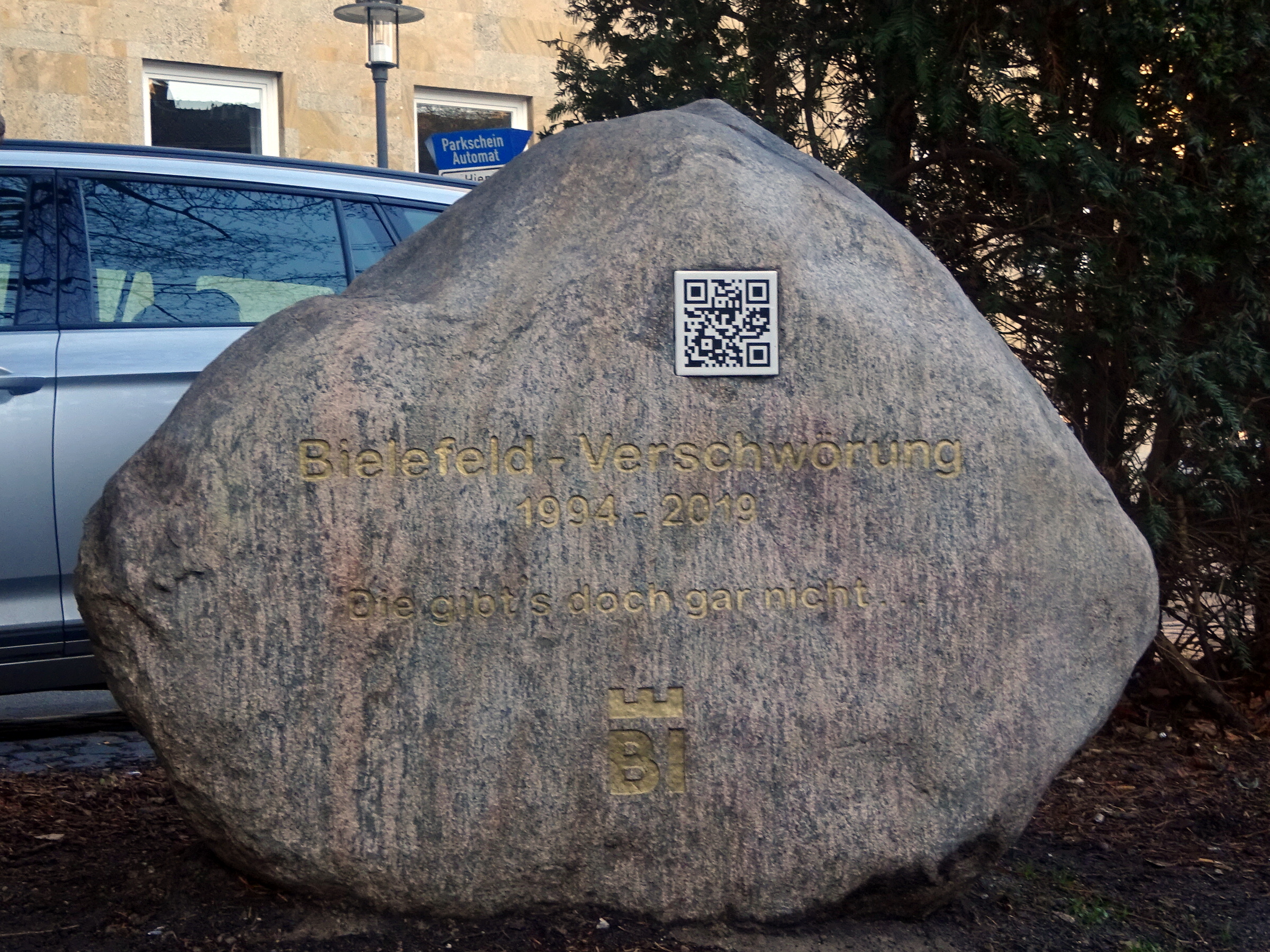
As of this writing, Wyoming has done neither. The Cowboy State is taking a more philosophical approach. When a Wisconsin high school student emailed all 60 members of the Wyoming State Legislature in 2020 to ask them whether their state existed, Representative Sara Burlingame bounced the question back: “How can we know any of us exist?” And if none of us exist, do we even have to do our homework?
One of her colleagues, Representative Dan Zwonitzer, gave the high schooler an even more disturbing answer: “It’s actually true. We’re a government conspiracy. I’m in a bunker outside the DC area. Just don’t tell anyone.”
Strange Maps #1227
Got a strange map? Let me know at strangemaps@gmail.com.
Follow Strange Maps on X and Facebook.
*Note: We are intentionally being obtuse. There’s actually plenty of stuff Wyoming is famous for, and rightly so. Wyoming was the first state to give women the vote (1869) and the first to elect a female governor (Nellie Tayloe Ross, 1925-27). Yellowstone, in the state’s northwest corner, draws more than three million visitors per year. Designated in 1872, it is the oldest National Park in the world. Shoshone National Forest, declared in 1891, is the oldest National Forest in the nation. Famous Wyomingians (equally correct: Wyomingites) include Buffalo Bill (founded the town of Cody) and Jackson Pollock (born in Cody).



